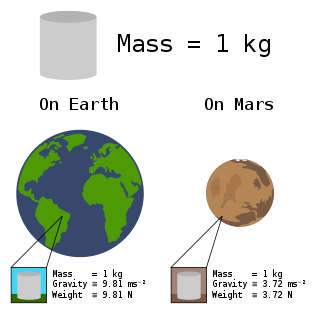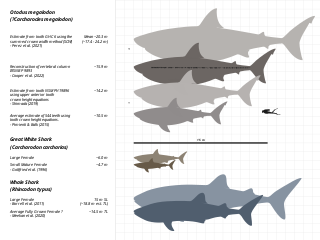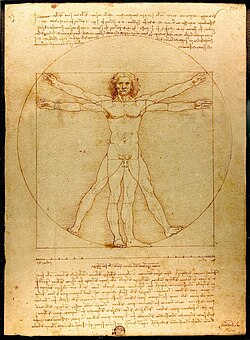The anthropic principle, also known as the "observation selection effect", is the hypothesis, first proposed in 1957 by Robert Dicke, that the range of possible observations that could be made about the universe is limited by the fact that observations could happen only in a universe capable of developing intelligent life. Proponents of the anthropic principle argue that it explains why the universe has the age and the fundamental physical constants necessary to accommodate conscious life, since if either had been different, no one would have been around to make observations. Anthropic reasoning is often used to deal with the idea that the universe seems to be finely tuned for the existence of life.
In engineering and science, dimensional analysis is the analysis of the relationships between different physical quantities by identifying their base quantities and units of measurement and tracking these dimensions as calculations or comparisons are performed. The term dimensional analysis is also used to refer to conversion of units from one dimensional unit to another, which can be used to evaluate scientific formulae.
Length is a measure of distance. In the International System of Quantities, length is a quantity with dimension distance. In most systems of measurement a base unit for length is chosen, from which all other units are derived. In the International System of Units (SI) system the base unit for length is the metre.

Measurement is the quantification of attributes of an object or event, which can be used to compare with other objects or events. In other words, measurement is a process of determining how large or small a physical quantity is as compared to a basic reference quantity of the same kind. The scope and application of measurement are dependent on the context and discipline. In natural sciences and engineering, measurements do not apply to nominal properties of objects or events, which is consistent with the guidelines of the International vocabulary of metrology published by the International Bureau of Weights and Measures. However, in other fields such as statistics as well as the social and behavioural sciences, measurements can have multiple levels, which would include nominal, ordinal, interval and ratio scales.

The International System of Units, internationally known by the abbreviation SI, is the modern form of the metric system and the world's most widely used system of measurement. Coordinated by the International Bureau of Weights and Measures it is the only system of measurement with an official status in nearly every country in the world, employed in science, technology, industry, and everyday commerce.

The mole (symbol mol) is a unit of measurement, the base unit in the International System of Units (SI) for amount of substance, a quantity proportional to the number of elementary entities of a substance. One mole contains exactly 6.02214076×1023 elementary entities (approximately 602 sextillion or 602 billion times a trillion), which can be atoms, molecules, ions, or other particles. The number of particles in a mole is the Avogadro number (symbol N0) and the numerical value of the Avogadro constant (symbol NA) expressed in mol-1. The value was chosen based on the historical definition of the mole as the amount of substance that corresponds to the number of atoms in 12 grams of 12C, which made the mass of a mole of a compound expressed in grams numerically equal to the average molecular mass of the compound expressed in daltons. With the 2019 redefinition of the SI base units, the numerical equivalence is now only approximate but may be assumed for all practical purposes.

The metric system is a decimal-based system of measurement. The current international standard for the metric system is the International System of Units, in which all units can be expressed in terms of seven base units: the metre, kilogram, second, ampere, kelvin, mole, and candela.
A base unit of measurement is a unit of measurement adopted for a base quantity. A base quantity is one of a conventionally chosen subset of physical quantities, where no quantity in the subset can be expressed in terms of the others. The SI base units, or Systeme International d'unites, consists of the metre, kilogram, second, ampere, kelvin, mole and candela.

Anthropometry refers to the measurement of the human individual. An early tool of physical anthropology, it has been used for identification, for the purposes of understanding human physical variation, in paleoanthropology and in various attempts to correlate physical with racial and psychological traits. Anthropometry involves the systematic measurement of the physical properties of the human body, primarily dimensional descriptors of body size and shape. Since commonly used methods and approaches in analysing living standards were not helpful enough, the anthropometric history became very useful for historians in answering questions that interested them.

In common usage, the mass of an object is often referred to as its weight, though these are in fact different concepts and quantities. Nevertheless, one object will always weigh more than another with less mass if both are subject to the same gravity.
The term anthropic unit is used with different meanings in archaeology, in measurement and in social studies.

The degree Celsius is the unit of temperature on the Celsius scale, one of two temperature scales used in the International System of Units (SI), the other being the closely related Kelvin scale. The degree Celsius can refer to a specific temperature on the Celsius scale or to a difference or range between two temperatures. It is named after the Swedish astronomer Anders Celsius (1701–1744), who proposed the first version of it in 1742. The unit was called centigrade in several languages for many years. In 1948, the International Committee for Weights and Measures renamed it to honor Celsius and also to remove confusion with the term for one hundredth of a gradian in some languages. Most countries use this scale.

Temperature is a physical quantity that quantitatively expresses the attribute of hotness or coldness. Temperature is measured with a thermometer. It reflects the average kinetic energy of the vibrating and colliding atoms making up a substance.

A unit of measurement, or unit of measure, is a definite magnitude of a quantity, defined and adopted by convention or by law, that is used as a standard for measurement of the same kind of quantity. Any other quantity of that kind can be expressed as a multiple of the unit of measurement.
Quantity calculus is the formal method for describing the mathematical relations between abstract physical quantities.

In 2019, four of the seven SI base units specified in the International System of Quantities were redefined in terms of natural physical constants, rather than human artifacts such as the standard kilogram. Effective 20 May 2019, the 144th anniversary of the Metre Convention, the kilogram, ampere, kelvin, and mole are now defined by setting exact numerical values, when expressed in SI units, for the Planck constant, the elementary electric charge, the Boltzmann constant, and the Avogadro constant, respectively. The second, metre, and candela had previously been redefined using physical constants. The four new definitions aimed to improve the SI without changing the value of any units, ensuring continuity with existing measurements. In November 2018, the 26th General Conference on Weights and Measures (CGPM) unanimously approved these changes, which the International Committee for Weights and Measures (CIPM) had proposed earlier that year after determining that previously agreed conditions for the change had been met. These conditions were satisfied by a series of experiments that measured the constants to high accuracy relative to the old SI definitions, and were the culmination of decades of research.

The history of the metric system began during the Age of Enlightenment with measures of length and weight derived from nature, along with their decimal multiples and fractions. The system became the standard of France and Europe within half a century. Other measures with unity ratios were added, and the system went on to be adopted across the world.
In particle physics and physical cosmology, Planck units are a system of units of measurement defined exclusively in terms of four universal physical constants: c, G, ħ, and kB. Expressing one of these physical constants in terms of Planck units yields a numerical value of 1. They are a system of natural units, defined using fundamental properties of nature rather than properties of a chosen prototype object. Originally proposed in 1899 by German physicist Max Planck, they are relevant in research on unified theories such as quantum gravity.
This glossary of physics is a list of definitions of terms and concepts relevant to physics, its sub-disciplines, and related fields, including mechanics, materials science, nuclear physics, particle physics, and thermodynamics. For more inclusive glossaries concerning related fields of science and technology, see Glossary of chemistry terms, Glossary of astronomy, Glossary of areas of mathematics, and Glossary of engineering.

Size in general is the magnitude or dimensions of a thing. More specifically, geometrical size can refer to three geometrical measures: length, area, or volume. Length can be generalized to other linear dimensions. Size can also be measured in terms of mass, especially when assuming a density range.












